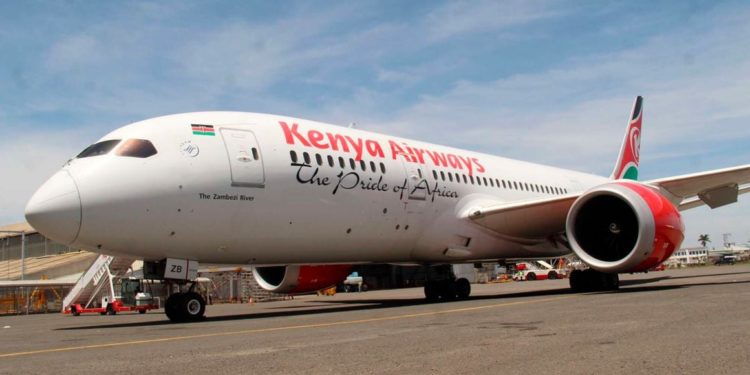Kenya Airways more than doubled its loss to Kshs 38.3 billion from Kshs 15.9 billion for the financial year ended December 2022, attributable to high global fuel prices and a tight foreign exchange market.
The firm also blamed the loss on the pilots’ strike late last year that saw the airline suffer a loss of Kshs 1.3 billion.
KQ suffered a rise in net loss majorly due to the Kshs 18.0 billion finance cost that was passed through the income statement after the government took over the servicing of Kshs 69 billion following the airline’s default on payment.
Read: KQ and South African Airways Announces a Partnership for 2024
Costs grew to Kshs 155.0 billion from Kshs 86.4 billion mainly driven by fuel, which increased by 160 percent.
The airline has liabilities worth Kshs 117.0 billion falling due in under a year and a further Kshs 159.7 billion in long-term liabilities. It is however banking on more government support.
KQ CEO Allan Kilavuka noted that despite the opening up of markets post-COVID, the aviation operating environment was affected by surging fuel costs, deterioration of the dollar and its effect on direct operating costs.
“The tight forex demand had a significant impact on Kenya Airways’ financial transactions which are mainly carried out in the major foreign currencies specifically the devaluation of the Kenya Shilling,” Kilavuka said.
Read: CIC Profit after tax hits Kshs. 1.1 billion in FY’2022 Results
The shilling has in the past year dropped close to 14 percent in value against the greenback. It closed to another new low of 131.6 against the US dollar on Monday.
The Group’s total operating costs increased by 59 percent, with direct operating costs increasing by 93 percent, attributable to increased operations and a huge increase of 160 percent in the cost of global fuel prices throughout the year.
Read: Co-orperative Bank Announces Ksh 8.8 Billion Dividend In Their FY’2022 Results
However, airline’s revenue increased by 66 percent to Kshs 116.8 billion in 2022 from Kshs 70.2 in 2021. The growth in revenue was driven by a significant increase in passenger numbers which grew by 68 percent to 3.7 million passengers, and over 65,000 tonnes, a 3.5 percent increase in cargo tonnage.
Email your news TIPS to editor@thesharpdaily.com


















